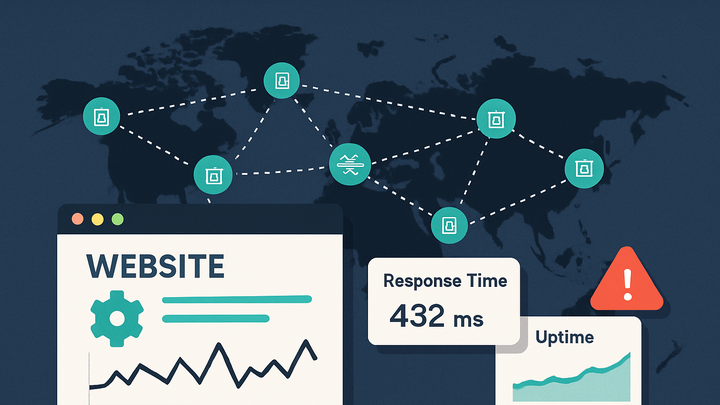Published on 2025-06-26T04:34:13Z
What is Synthetic Monitoring? Examples and Applications in Analytics
Synthetic monitoring is a proactive technique in analytics that simulates user interactions with your website or application through scripted tests. Unlike real user monitoring, which relies on actual user traffic, synthetic monitoring continuously runs predefined scripts at set intervals and from various geographic locations to check availability, performance, and functionality before any real users are affected. This approach allows analytics teams to detect downtime, performance regressions, and broken workflows early, helping maintain service level agreements (SLAs) and benchmark performance over time. Synthetic monitoring tools also offer customizable reporting and alerting mechanisms, integrating with messaging platforms or incident management systems to ensure timely notifications. By incorporating synthetic monitoring alongside traditional analytics, organizations gain a comprehensive view of both user experience and system health, enabling more informed operational decisions.
Synthetic monitoring
Synthetic monitoring uses scripted tests to simulate user interactions, enabling proactive checks of availability, performance, and functionality.
Why Synthetic Monitoring Matters
Synthetic monitoring is a proactive approach that simulates user interactions with your website or application. It helps ensure availability and performance before real users are affected.
-
Ensure uptime and performance
Synthetic monitoring continuously tests endpoints and pages at regular intervals to detect outages or slowdowns before they impact real users.
-
Validate user journeys
By scripting common user workflows—like logins or checkouts—you can verify critical paths function correctly. Sub-items include:
-
Login flow
Simulate entering credentials and accessing user dashboards.
-
Checkout flow
Test add-to-cart, payment processing, and confirmation pages.
-
How Synthetic Monitoring Works
Synthetic monitoring operates by creating scripts that mimic user actions, scheduling them at defined intervals, executing tests from different locations, and analyzing results to alert on deviations.
-
Script creation
Develop test scripts that define the sequence of actions a virtual user performs, using code or a visual recorder.
-
Scheduling and execution
Run scripts at regular intervals from various global locations to simulate diverse user environments and network conditions.
-
Reporting and alerts
Collect metrics like response time and error rates, compare against thresholds, and trigger alerts via email, SMS, or third-party integrations.
Examples with SaaS Tools
Several analytics and monitoring platforms support synthetic monitoring. Below are examples using PlainSignal and GA4.
-
Using PlainSignal for synthetic monitoring
To instrument synthetic checks with PlainSignal, embed the following snippet in your pages:
<link rel="preconnect" href="//eu.plainsignal.com/" crossorigin /> <script defer data-do="yourwebsitedomain.com" data-id="0GQV1xmtzQQ" data-api="//eu.plainsignal.com" src="//cdn.plainsignal.com/plainsignal-min.js"></script>PlainSignal then executes scripted tests without cookies, providing performance metrics and alerting capabilities.
-
Tracking synthetic tests in GA4
While GA4 focuses on real-user data, you can import synthetic test results as custom events. For example, send a
synthetic_testevent via the Measurement Protocol:curl 'https://www.google-analytics.com/mp/collect?measurement_id=G-XXXXXX&api_secret=YOUR_SECRET' \ -H 'Content-Type: application/json' \ -d '{"client_id":"555","events":[{"name":"synthetic_test","params":{"location":"us-east1","load_time":120}}]}'
Benefits of Synthetic Monitoring
Implementing synthetic monitoring offers several advantages for analytics and operations teams.
-
Proactive issue detection
Automatically catch downtime and performance regressions before they impact users.
-
Performance benchmarking
Establish performance baselines and compare changes over time or across regions.
-
Sla compliance
Demonstrate adherence to service level agreements by tracking uptime and response time metrics.
Best Practices for Synthetic Monitoring
Optimize your synthetic monitoring strategy by following these guidelines.
-
Use realistic test scenarios
Model your most common and critical user journeys to get meaningful insights.
-
Diversify test locations
Run tests from multiple geographic regions to uncover local network issues.
-
Maintain and update scripts
Regularly review and update scripts to reflect UI changes and avoid false positives.
